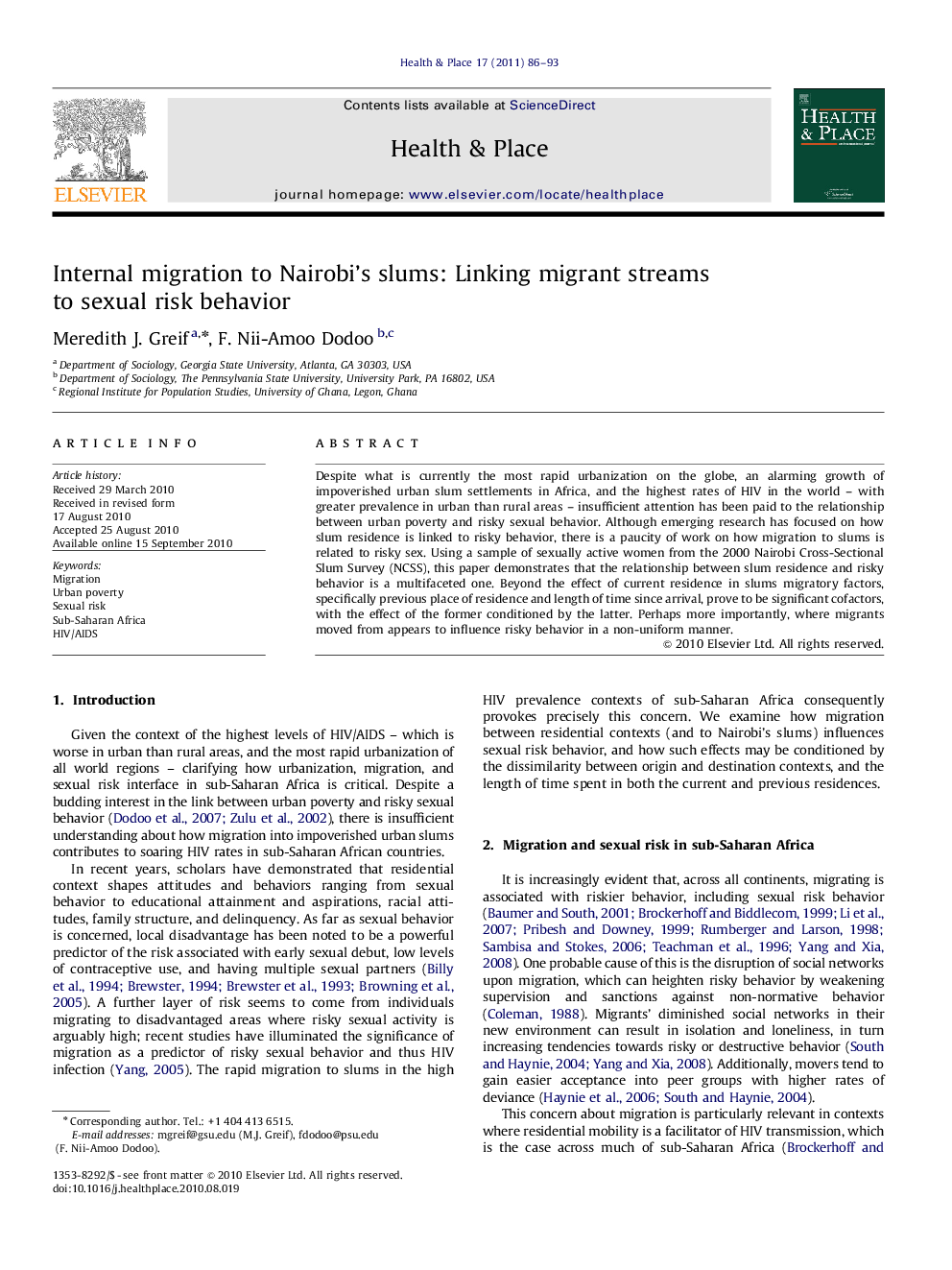| Article ID | Journal | Published Year | Pages | File Type |
|---|---|---|---|---|
| 10502832 | Health & Place | 2011 | 8 Pages |
Abstract
Despite what is currently the most rapid urbanization on the globe, an alarming growth of impoverished urban slum settlements in Africa, and the highest rates of HIV in the world - with greater prevalence in urban than rural areas - insufficient attention has been paid to the relationship between urban poverty and risky sexual behavior. Although emerging research has focused on how slum residence is linked to risky behavior, there is a paucity of work on how migration to slums is related to risky sex. Using a sample of sexually active women from the 2000 Nairobi Cross-Sectional Slum Survey (NCSS), this paper demonstrates that the relationship between slum residence and risky behavior is a multifaceted one. Beyond the effect of current residence in slums migratory factors, specifically previous place of residence and length of time since arrival, prove to be significant cofactors, with the effect of the former conditioned by the latter. Perhaps more importantly, where migrants moved from appears to influence risky behavior in a non-uniform manner.
Related Topics
Health Sciences
Medicine and Dentistry
Public Health and Health Policy
Authors
Meredith J. Greif, F. Nii-Amoo Dodoo,
